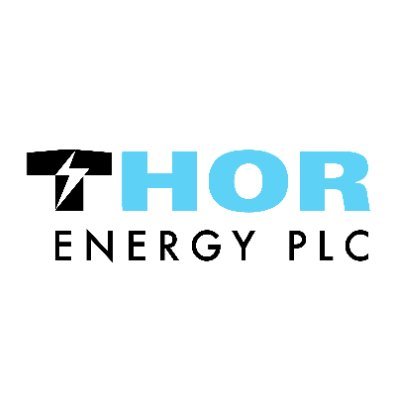From an unseen wellspring deep within the Earth to the promise of clean fuel forged by sunlight and wind, an intriguing duality is reshaping how investors might view the hydrogen economy. Beneath familiar landscapes, whispers of an untapped, naturally occurring gas are stirring interest, while above ground, renewable-powered processes are quietly maturing into robust supply chains. This juxtaposition hints at a potential inflection point: the convergence of geological serendipity and technological ingenuity in forging a hydrogen future.
In the silent depths of basement rocks and crystalline fractures, molecular hydrogen has long existed, trapped and replenished by geological processes. Recent estimates suggest that the total in-place resource of this natural hydrogen could span orders of magnitude, with a most likely value in the millions of tonnes. Even a small fraction of that, if recoverable, could underwrite a centuries-long supply at the scale needed to meet ambitious carbon-neutral goals. Unlike manufactured variants that demand energy-intensive conversion processes, this subterranean hydrogen emerges ready to use, sidestepping costly electrolysis and offering exceptionally low carbon intensity. For investors, the appeal lies not simply in volume but in the cost advantage: the extraction focus shifts from chemistry to geology, potentially compressing capital requirements and accelerating project timelines.
Above the surface, the established path to hydrogen has centred on water electrolysis powered by renewable electricity. Advances in membrane technologies and stack design have slimmed capital costs, while mounting experience with large-scale deployments has driven operational efficiencies. Today, green hydrogen from solar- and wind-driven electrolysers is edging toward price parity with traditional, fossil-derived alternatives—once considered a distant prospect. As electrolyser fleets scale into gigawatt-class installations, economies of scale are anticipated to deliver further cost declines, making low-carbon hydrogen an increasingly attractive feedstock for industry and energy storage. This evolution underpins a broader ecosystem: advanced purification units ensure water quality, compression and cryogenic systems ready the gas for transport, and distributed fuel cells or synthesis reactors convert it on demand into power, fuels or chemicals.
Yet beneath this technological narrative lies a strategic question for investors: how to balance the steady gains of manufactured hydrogen with the speculative promise of natural deposits. Geological exploration, by its nature, carries discovery risk and often entails multi-year drilling campaigns before resource confirmation. In contrast, electrolysis projects leverage proven manufacturing processes, contractable equipment and known operating profiles. However, they remain subject to fluctuations in renewable power prices and supply chain bottlenecks for critical components. Natural hydrogen ventures, if successful, could disrupt cost curves overnight, creating a proprietary resource base insulated from energy market volatility. The crux for capital allocators is to gauge whether the upside of a breakthrough justifies the upfront risk, and how exposure to both pathways might de-risk an overall portfolio.
Meanwhile, policy landscapes around the world are tilting in hydrogen’s favour. Mandates for low-carbon industrial feedstocks and incentives for clean fuels are maturing, with successive funding rounds and regulatory frameworks knitting together supply and demand. For green hydrogen, this has translated into guaranteed off-take agreements and subsidies that bolster project bankability. For nascent natural hydrogen plays, the regulatory sandbox is still evolving, yet there is growing recognition among policymakers of the potential strategic value in domestic, emissions-free gas reserves. Any framework that creates clarity around licensing, environmental safeguards and resource stewardship could accelerate exploration work and shorten the path to first production.
Investor attention is also sharpening on end-use markets. Heavy industry sectors such as steelmaking and chemical manufacturing, long resistant to electrification, are testing hydrogen-based process routes. In transport, trials of long-haul trucks and rail locomotives powered by fuel cells are revealing operational profiles that complement battery-electric solutions, particularly where rapid refuelling and long ranges matter. Energy storage applications, meanwhile, envisage hydrogen as a seasonal buffer, capturing summer solar surpluses and delivering power through winter peaks. Each of these use cases carries distinct offtake dynamics and pricing structures, shaping how hydrogen projects of both natural and manufactured origin can secure revenue streams.
As the hydrogen ecosystem deepens, the interplay between resource geology and electrochemical engineering will define winners and laggards. Portfolios that blend exposure to ground-sprung hydrogen discoveries with stakes in renewable electrolysis infrastructure stand to capture returns across the risk-reward spectrum. Those that favour a single axis, be it geological opportunity or manufacturing scale, may gain clarity but forgo the optionality that hydrogen’s diverse pathways afford. In a market still coalescing around standardised contracts and evolving technologies, optionality itself can be a strategic asset.
In summary, the emerging hydrogen sector is distinguished by its dual supply vectors: one tapped directly from geological formations, offering a potentially low-cost, perpetual feedstock; the other forged by splitting water with renewable energy, delivering an increasingly competitive, scalable product. Investors are now challenged to discern how these threads will interweave, balancing exploration risk with engineering certainty to position for a cleaner, hydrogen-enabled economy.
Hydrogen, whether coaxed from ancient rock formations or synthesised via renewable electrolysis, is poised to become both a versatile energy carrier and a climate-friendly fuel, underpinning industries from transport to manufacturing and opening new avenues for long-duration energy storage.
Thor Energy PLC (LON:THR) is a leading exploration company focused on natural hydrogen and helium, with a significant footprint in the highly prospective South Australian region.












































